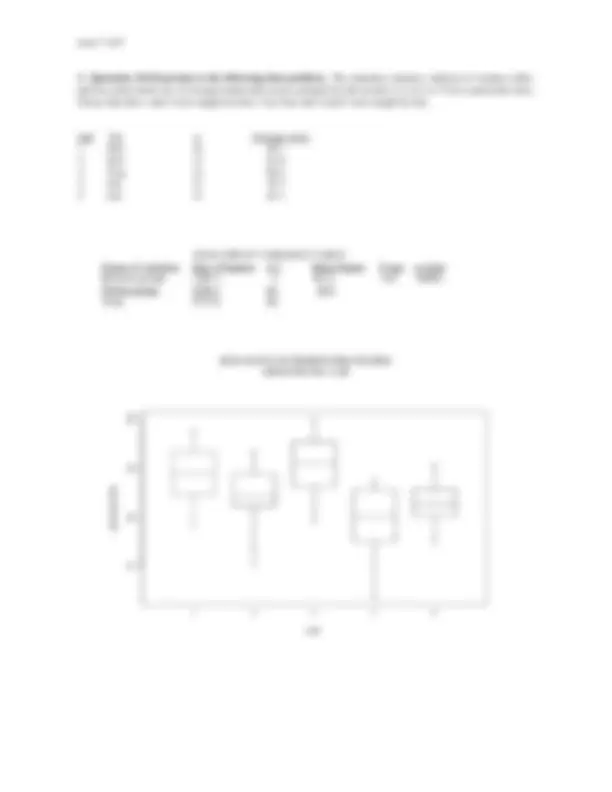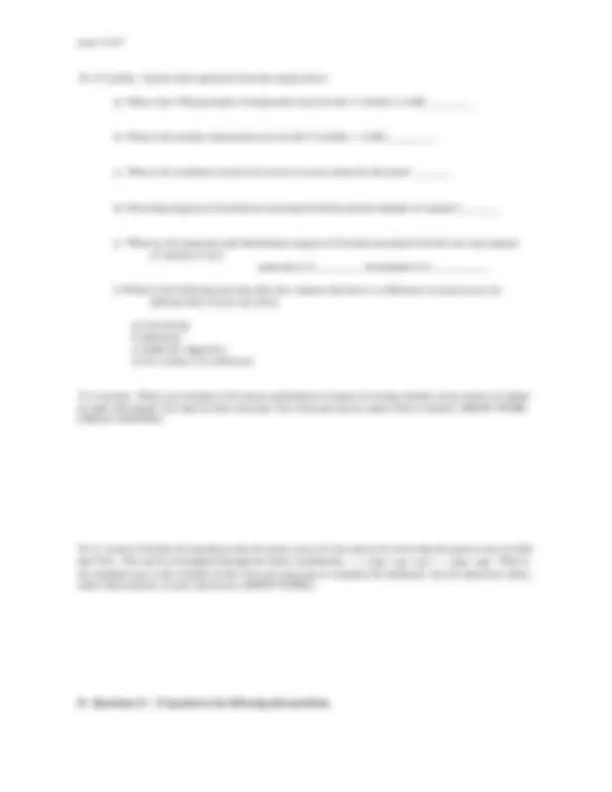





Study with the several resources on Docsity

Earn points by helping other students or get them with a premium plan


Prepare for your exams
Study with the several resources on Docsity

Earn points to download
Earn points by helping other students or get them with a premium plan
Community
Ask the community for help and clear up your study doubts
Discover the best universities in your country according to Docsity users
Free resources
Download our free guides on studying techniques, anxiety management strategies, and thesis advice from Docsity tutors
Material Type: Exam; Class: METHODS OF DATA ANALYSIS; Subject: Statistics; University: Oregon State University; Term: Winter 1999;
Typology: Exams
1 / 6

This page cannot be seen from the preview
Don't miss anything!




A. (24 points) Write the letter corresponding to the term from the list at the bottom of the page that best matches each of the following descriptions.
A. analysis-of-variance F-test B. analysis of variance table C. confounding variable D. explanatory variable E. family-wise F. least squares G. observational study H. outlier I. p-value J. pair-wise K. randomization distribution L. randomized experiment M. rank-sum test N. regression O. residual P. resistance Q. response variable R. sampling distribution S. signed-rank test T. t-test for equal means U. t-test for zero intercept V. t-test for zero slope W. 95% confidence interval X. 95% prediction interval
B. (20 points) For each data problem in 13-17 below, write a letter from the list at the bottom of the page corresponding to the most appropriate tool for answering the specified question of interest.
Tool for answering question: ________
Tool for answering question: ________
Tool for answering question: ________
Tool for answering question: _________
Tool for answering question: ________
A. One-way analysis of variance F-test. B. Unadjusted (LSD) t-test for comparing 2 of several means. C. Bonferroni-adjusted t-tests for comparing several means. D. Tukey-Kramer-adjusted t-tests for comparing each mean with each other mean. E. A t-test for some specific linear combination of several means. F. A confidence interval for a specific linear combination of means G. A t-test for the hypothesis that the intercept in a simple regression model is zero. H. A confidence interval for the intercept in a simple regression model I. A t-test for the hypothesis that the slope in a simple regression model is zero. J. A confidence interval for the slope in a simple regression model. K. A confidence interval for the mean of a response at some value of the explanatory variable. L. A prediction interval for values of the response at some value of the explanatory variable.
a) What is the 75th percentile of homework scores for lab 1? (within 1 is OK) ________
b) What is the median homework score for lab 5? (within 1 is OK) _________
c) What is the estimated standard deviation of scores about the lab mean? _______
d) How many degrees of freedom are associated with the pooled estimate of variance?________
e) What are the numerator and denominator degrees of freedom associated with the one-way analysis of variance F-test? numerator d.f.:_________ denominator d.f.: __________
f) Which of the following best describes the evidence that there is a difference in mean scores for different labs? (circle one letter)
a) Convincing b) Moderate c) Slight but suggestive d) No evidence of a difference
D. Questions 21 - 27 pertain to the following data problem.
Diameters (in mm) of 5 bolts were measured on each of days 1-8 after maintenance of a machine that makes the bolts. It was desired to see if bolt diameter decreases with increasing time after maintenance.
Source of variation df Sum of Squares Mean Square F-stat
Between groups (a)__________ (c)__________ (d)___________ (f)______
Within groups (b)__________ 852 (e)___________
Total 39 1684
a) The Tukey-Kramer confidence intervals will tend to be too wide; Bonferroni is more appropriate. b) The question of interest implies a particular planned comparison. c) It is the pair-wise confidence levels, and not the family-wise that is of interest for this problem. d) Using the Tukey-Kramer in this problem would be a form of data-snooping. e) The question of interest only requires a comparison of two of the means; not each mean with each other.